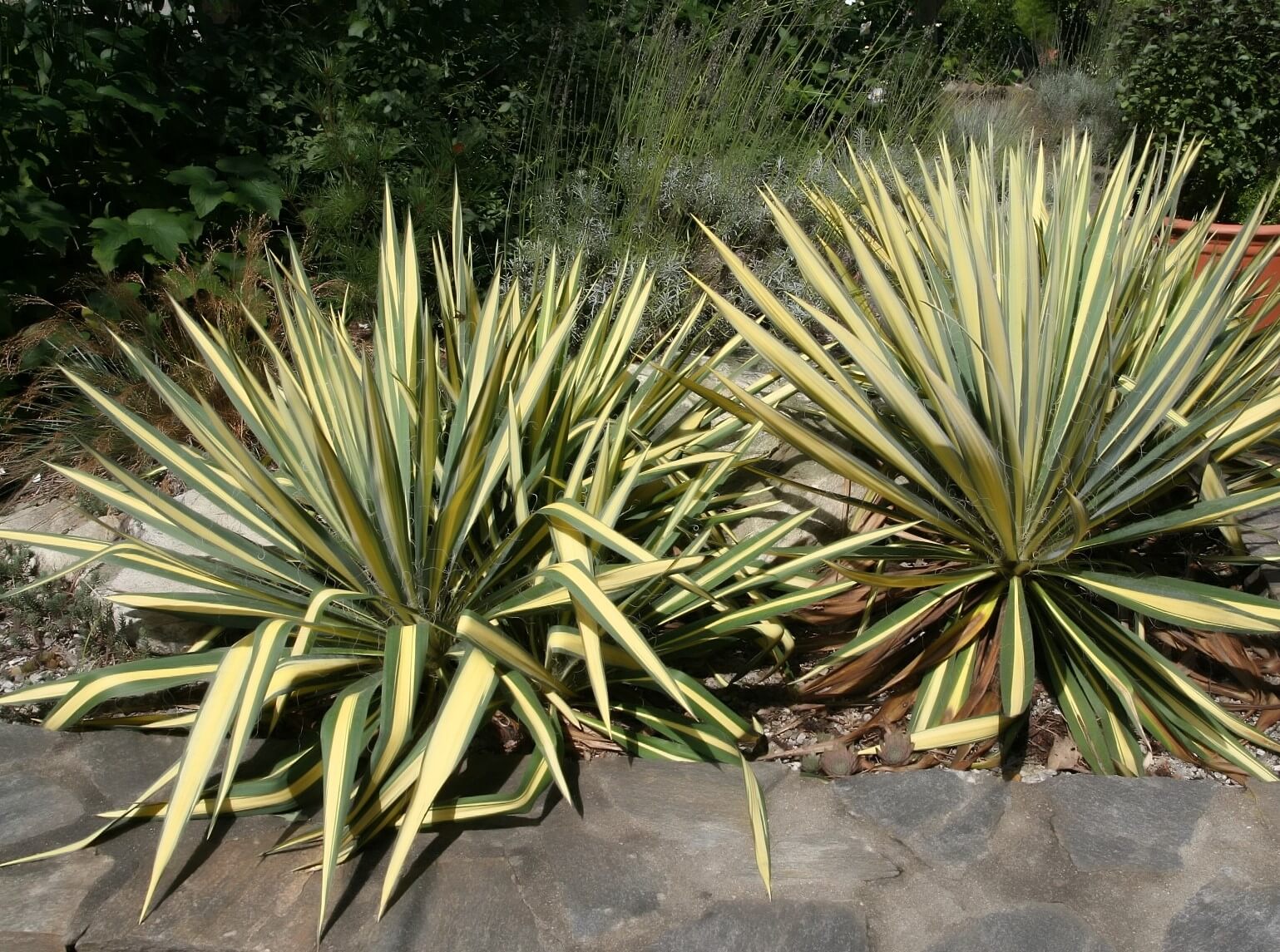Color guard yucca plants stand out as captivating specimens in the plant world, boasting unique features that add architectural interest and visual drama to any landscape.
These resilient plants possess a distinct, sword-shaped foliage and a sturdy root system that anchors them firmly in the ground, making them highly adaptable to various growing conditions.
Cultivation and Care: Color Guard Yucca Plants

Color guard yucca plants are hardy and adaptable, but providing optimal growing conditions will ensure their best performance. These conditions include well-drained soil, adequate sunlight, and appropriate watering practices.
Soil Type
Yucca plants prefer well-drained soil with a pH range of 6.0 to 8.0. The soil should be loose and porous to allow for good drainage and aeration. Avoid heavy clay soils or soils that are prone to waterlogging, as these can lead to root rot.
Sunlight Requirements
Color guard yucca plants thrive in full sun to partial shade. They require at least six hours of direct sunlight per day to produce their vibrant foliage and flowers. However, they can tolerate some shade, especially during the hottest part of the day.
Watering Frequency
Yucca plants are drought-tolerant and do not require frequent watering. Allow the soil to dry out completely between waterings. Overwatering can lead to root rot, so it is important to err on the side of underwatering. During the summer months, water more frequently, especially if the weather is hot and dry.
Fertilization
Fertilize color guard yucca plants lightly once a year in the spring. Use a balanced fertilizer with a ratio of 10-10-10. Avoid overfertilizing, as this can damage the plant.
Pruning
Pruning is not necessary for color guard yucca plants, but it can be done to remove dead or damaged leaves. Prune in the spring or fall when the plant is not actively growing.
Landscape Applications

Color guard yucca plants, with their striking foliage and architectural form, offer a wealth of creative landscaping possibilities. They bring a unique charm to outdoor spaces, adding texture, height, and visual interest.
Design Ideas
- Focal Point: Plant a single specimen in a prominent location, such as near an entrance, in the center of a flower bed, or as a centerpiece in a courtyard.
- Grouping: Create a stunning effect by planting several color guard yucca plants together in a group or mass. Arrange them in staggered heights and varying sizes to add depth and drama.
- Linear Border: Plant color guard yucca plants in a row along a walkway, driveway, or property line to create a bold and eye-catching border.
- Vertical Accent: Use color guard yucca plants to add height and structure to vertical gardens, trellises, or walls.
- Container Planting: Grow color guard yucca plants in containers on patios, decks, or balconies to enjoy their beauty in smaller spaces.
Outdoor Space Enhancements, Color guard yucca plants
| Outdoor Space Type | Enhancement |
|—|—|
| Xeriscapes | Drought-tolerant color guard yucca plants thrive in xeriscapes, providing color and texture without excessive water needs. |
| Coastal Gardens | Salt-tolerant color guard yucca plants are an excellent choice for coastal gardens, where they can withstand salty air and wind. |
| Mediterranean Gardens | Color guard yucca plants complement the warm colors and textures of Mediterranean-style gardens, creating a cohesive and exotic ambiance. |
| Rock Gardens | Color guard yucca plants add a touch of drama and height to rock gardens, blending well with other succulents and stones. |
| Tropical Gardens | The lush foliage of color guard yucca plants provides a striking contrast to the vibrant colors and patterns of tropical plants. |
Companion Plants
When selecting companion plants for color guard yucca plants, consider their contrasting textures and colors to create a visually appealing landscape. Some suitable companions include:
- Agaves
- Aloes
- Echeverias
- Sedums
- Ornamental grasses
- Lavender
- Salvia


Color guard yucca plants are a beautiful and versatile addition to any landscape. These plants are native to the southwestern United States and Mexico, and they are well-adapted to hot, dry climates. Color guard yucca plants are also relatively low-maintenance, making them a great choice for busy gardeners.
One of the best places to see color guard yucca plants in bloom is in Plant City, Florida. The alert tire plant in Plant City is home to a large collection of color guard yucca plants, and they are a popular attraction for visitors from all over the world.
The plants are typically in bloom from March to May, and they produce large, showy flowers that are a beautiful sight to behold.
With its sharp, pointed leaves, the color guard yucca plant is an eye-catching addition to any garden. When choosing a planter for your yucca, consider using terra cotta planter feet to elevate the plant and improve drainage. The porous nature of terra cotta allows excess water to evaporate, helping to prevent root rot.
Plus, the warm, earthy tones of terra cotta complement the natural beauty of the color guard yucca.
Color guard yucca plants, with their striking foliage, are known for their adaptability and low maintenance. While they are often associated with modern landscaping, their origins can be traced back to ancient times. Similar to the John Sevier fossil plant , which dates back millions of years, color guard yucca plants have evolved over time to withstand various environmental conditions.
Today, they continue to be a popular choice for gardeners due to their architectural form and drought tolerance, adding a touch of prehistoric charm to contemporary landscapes.